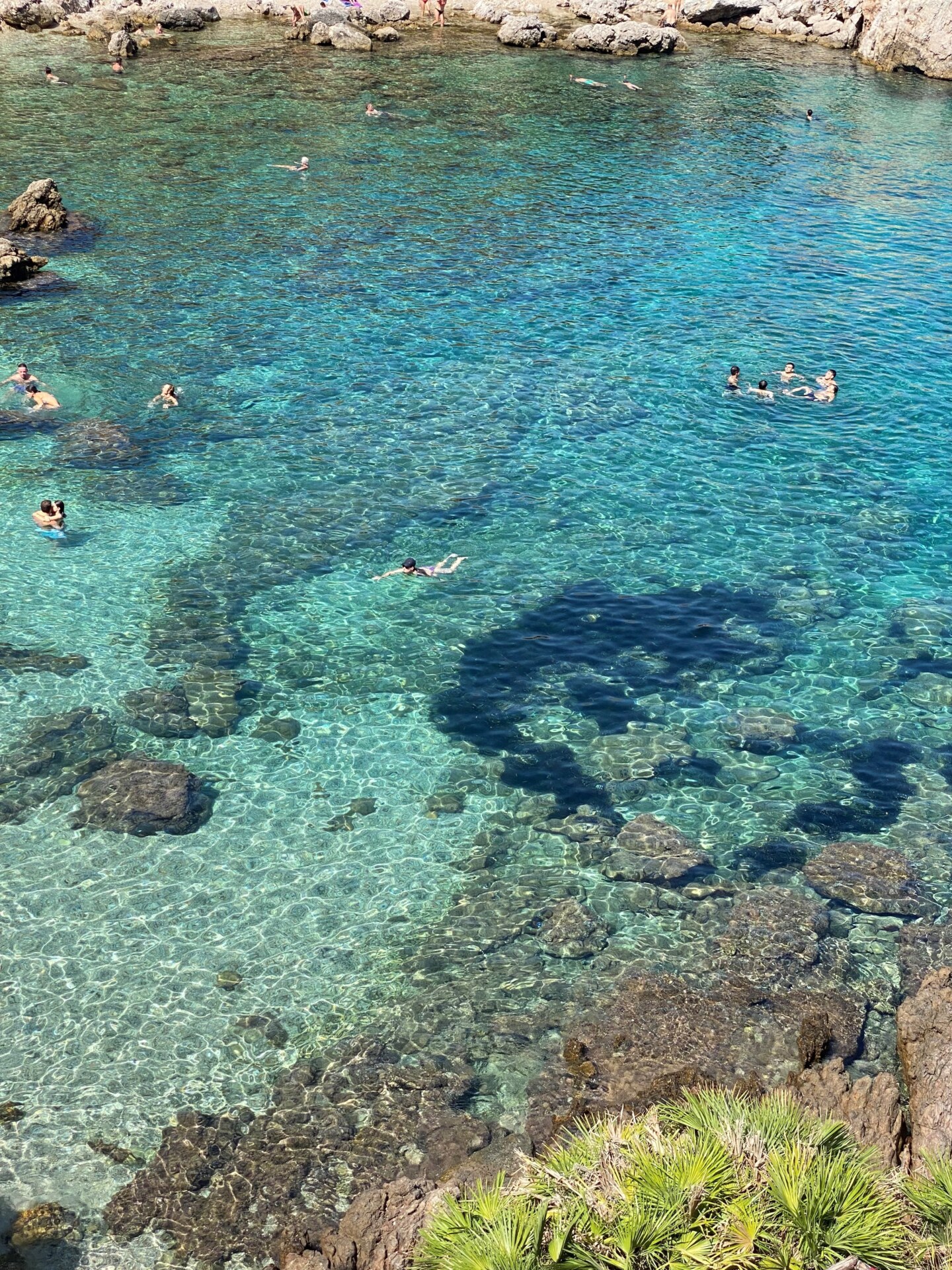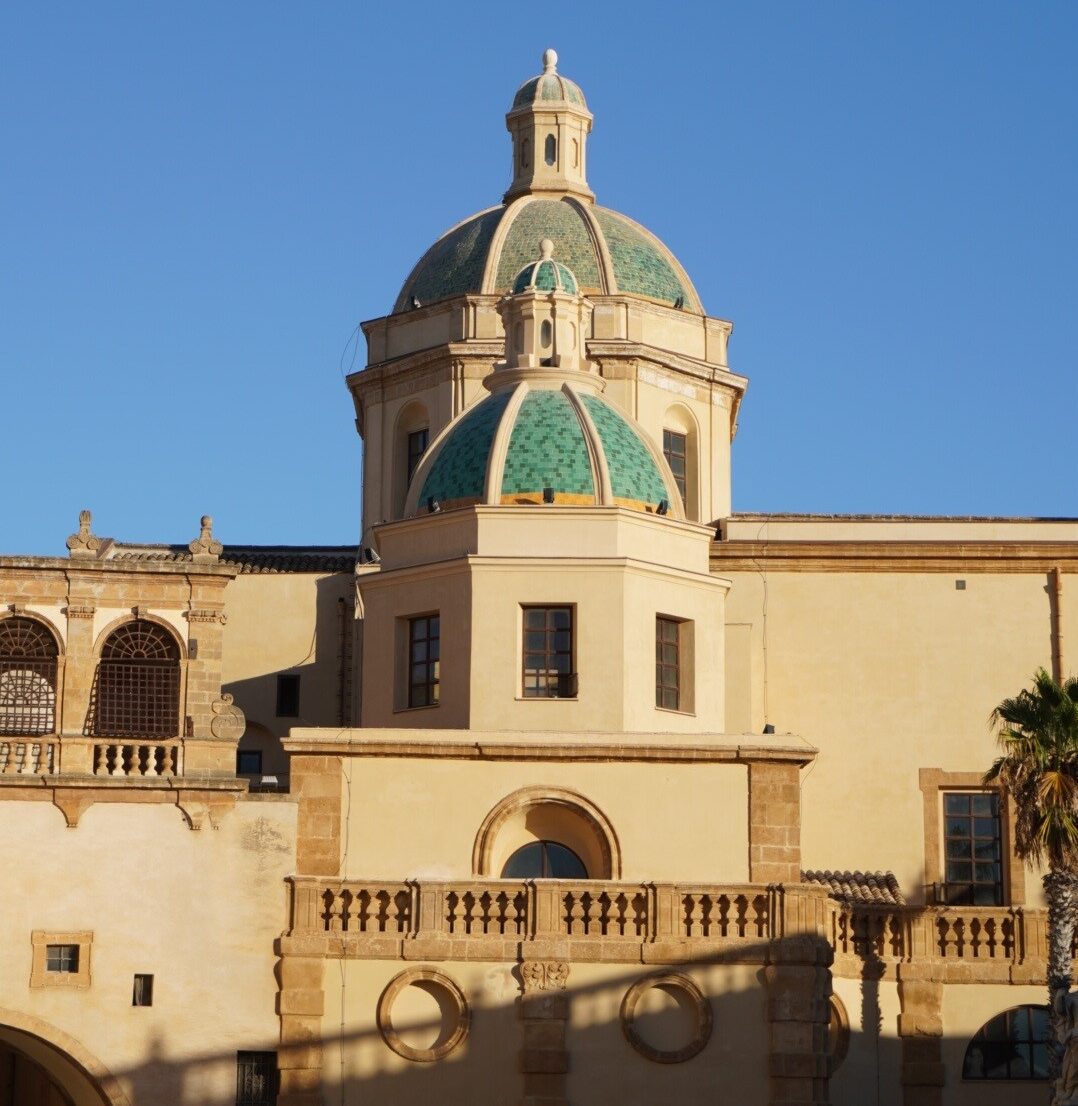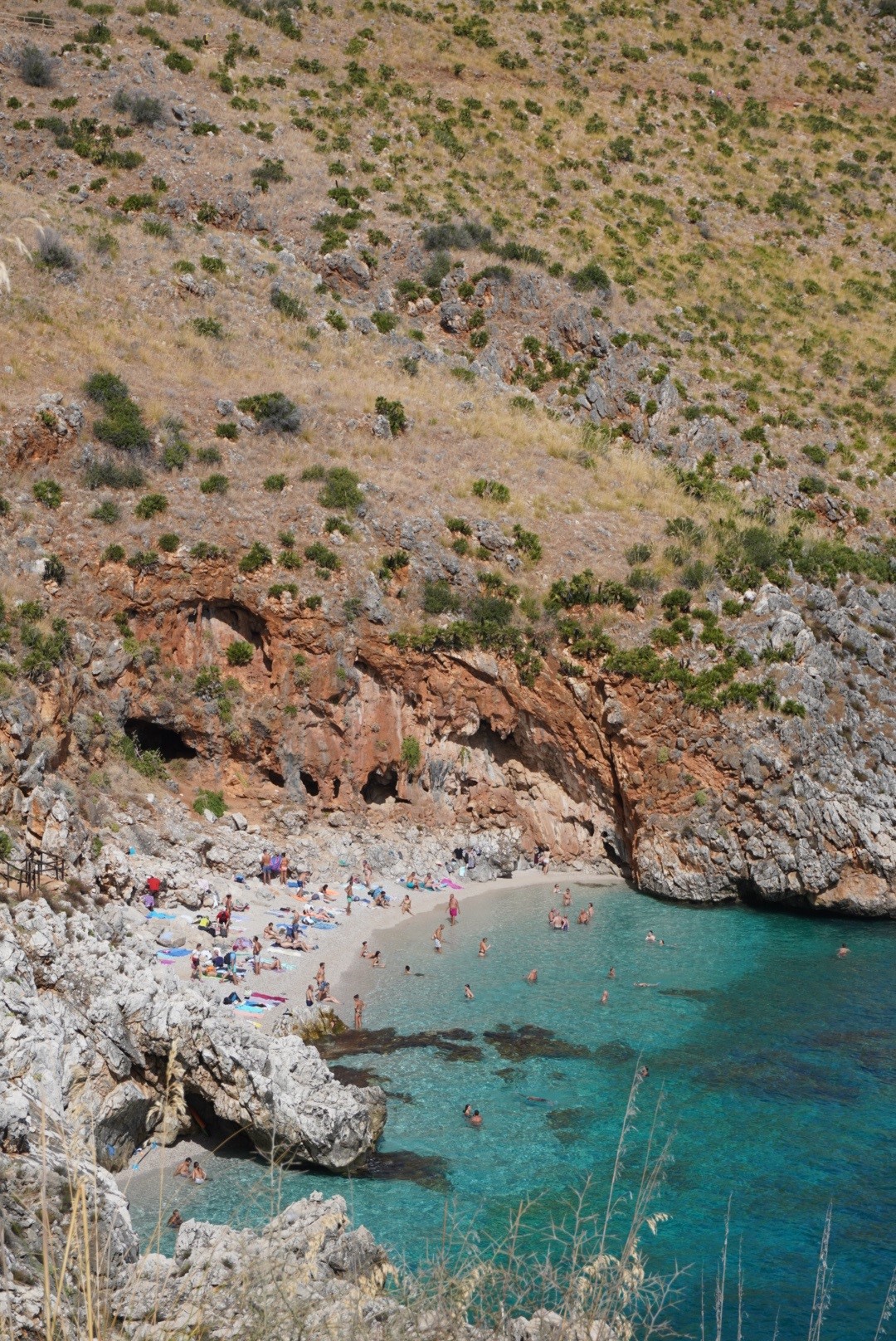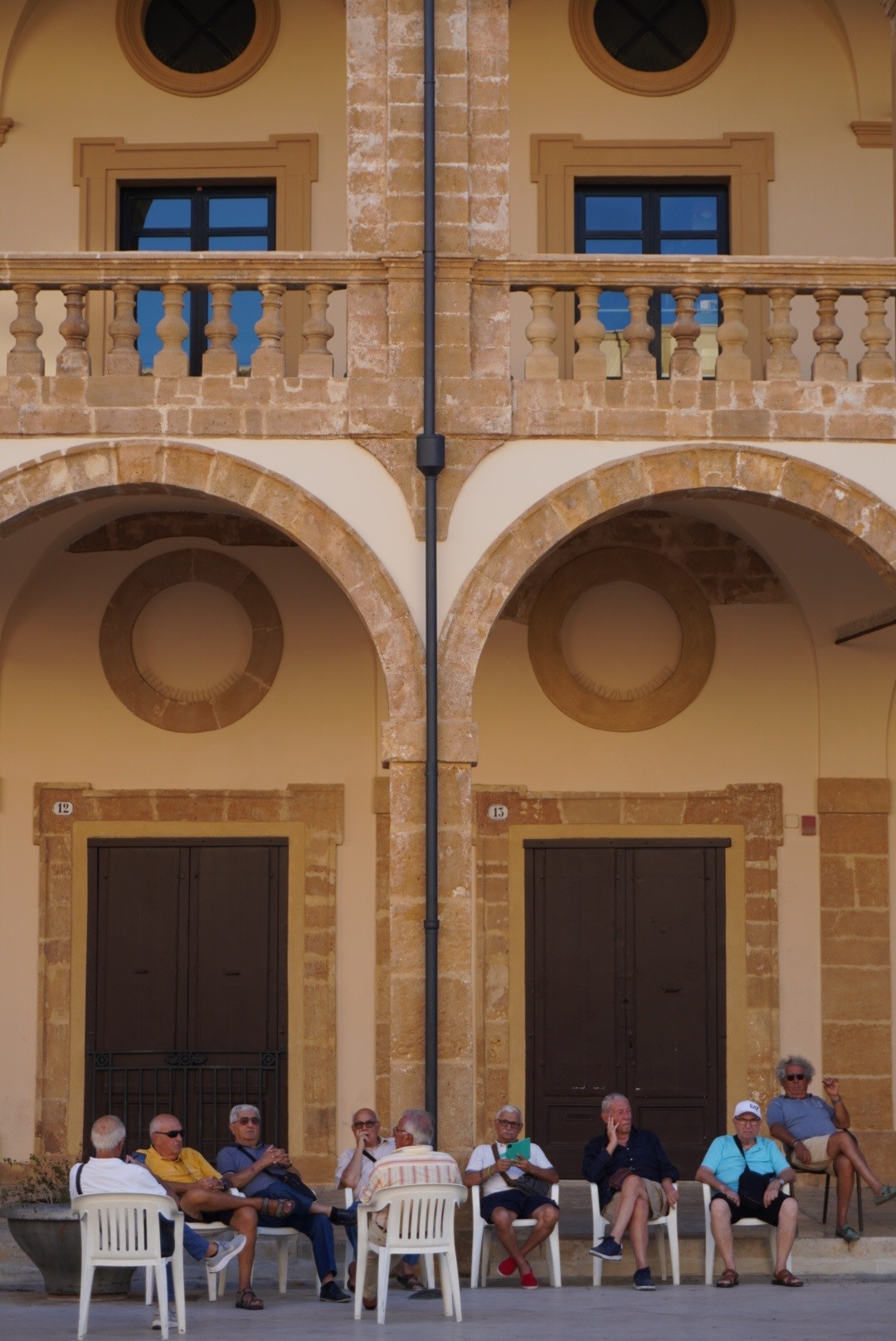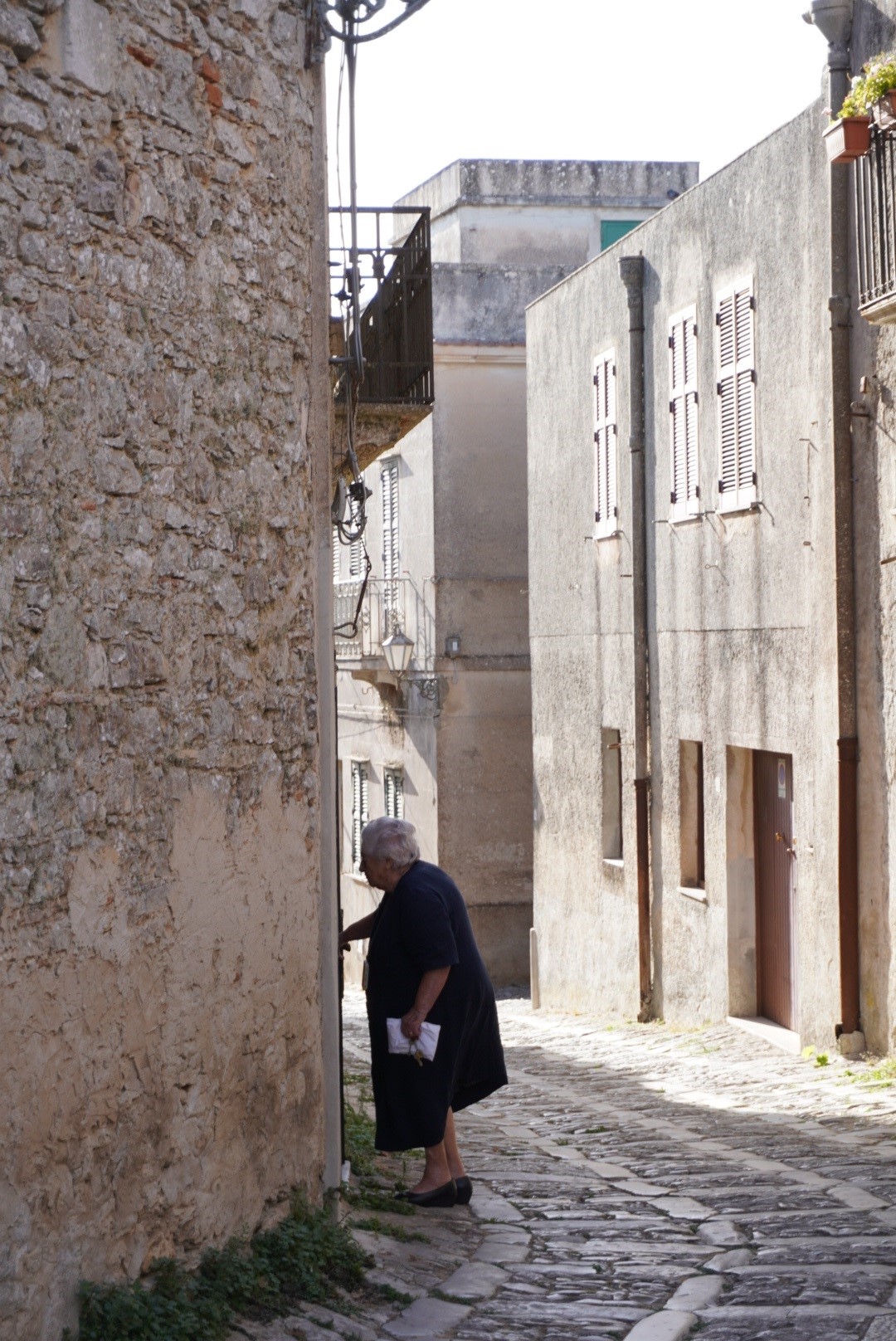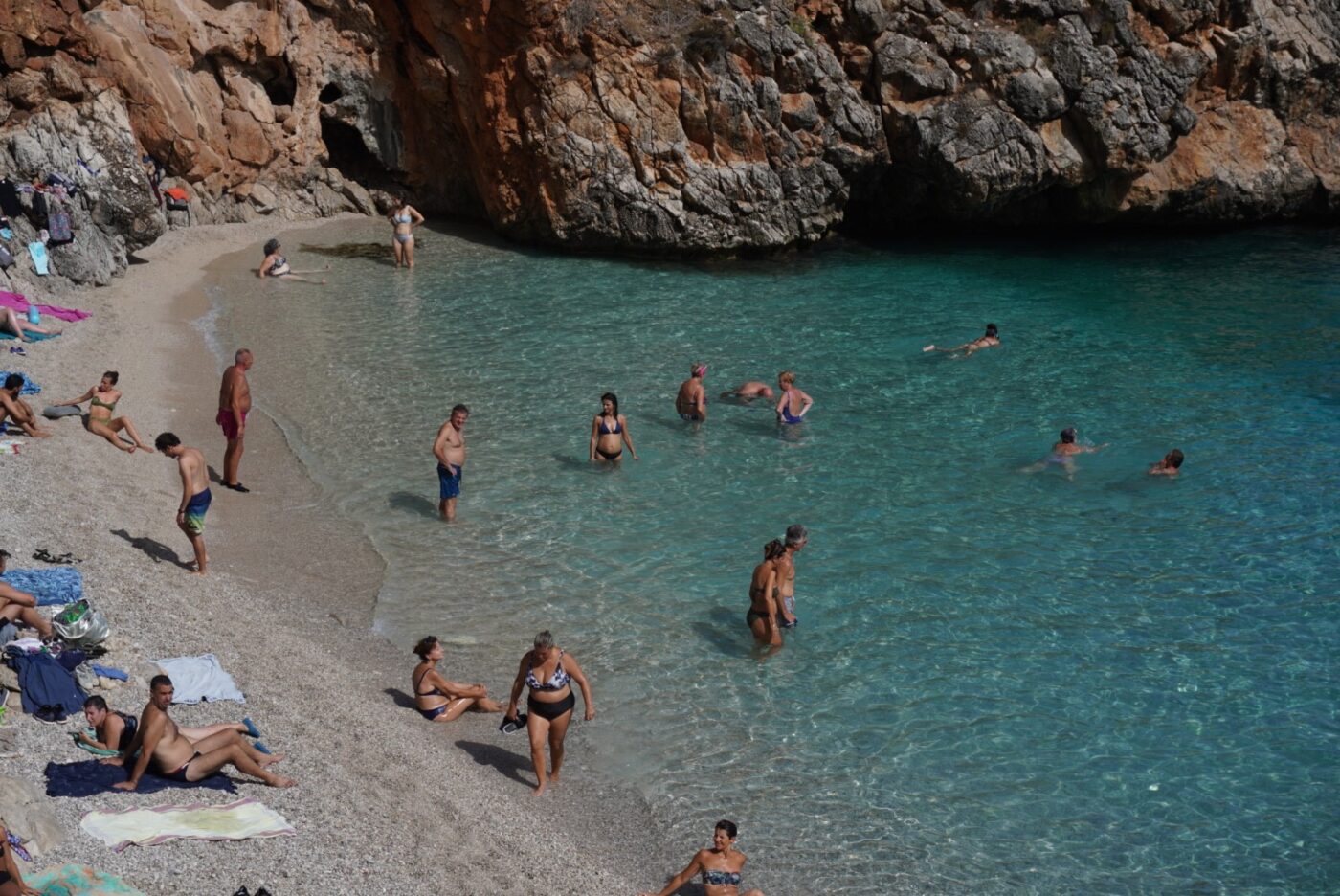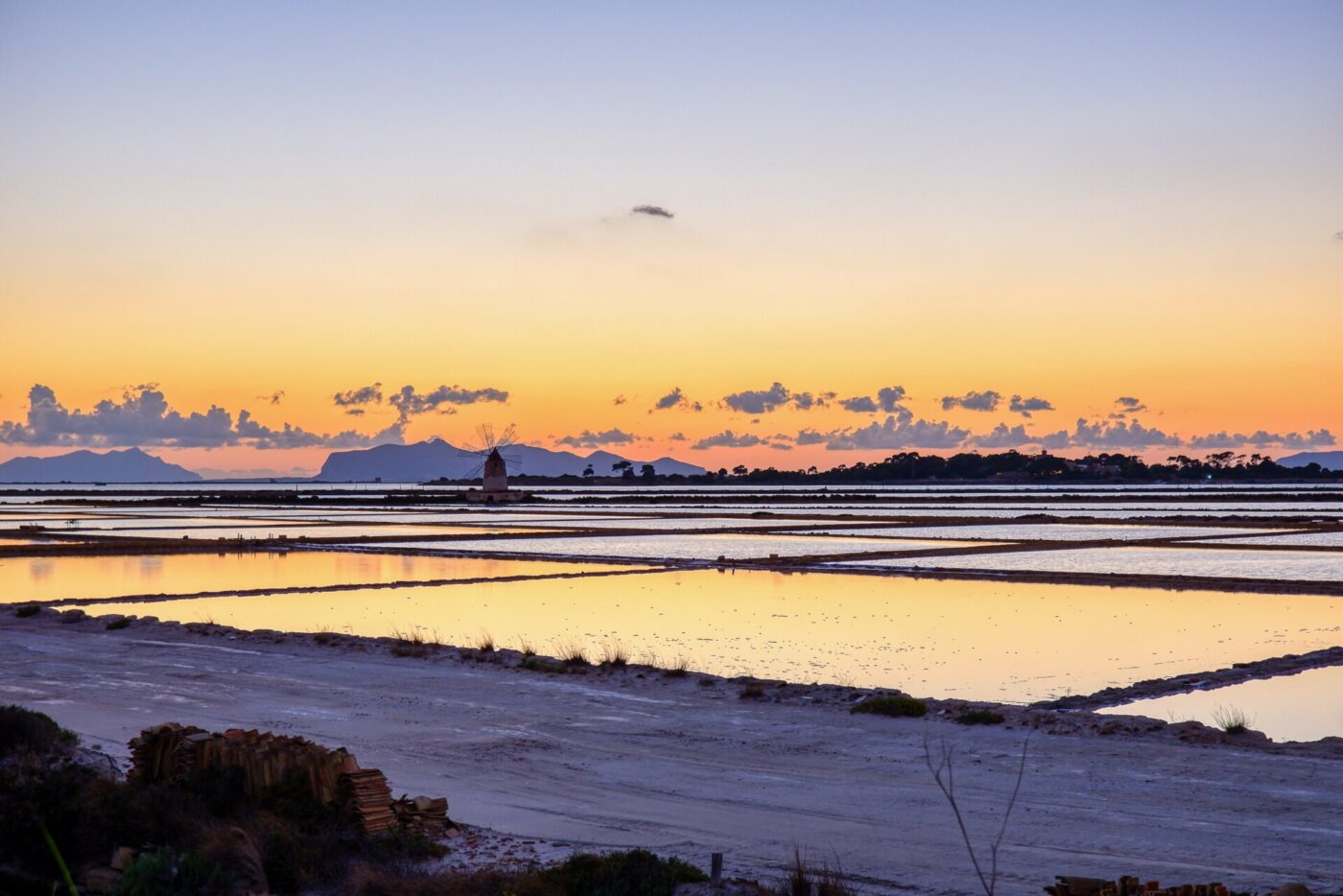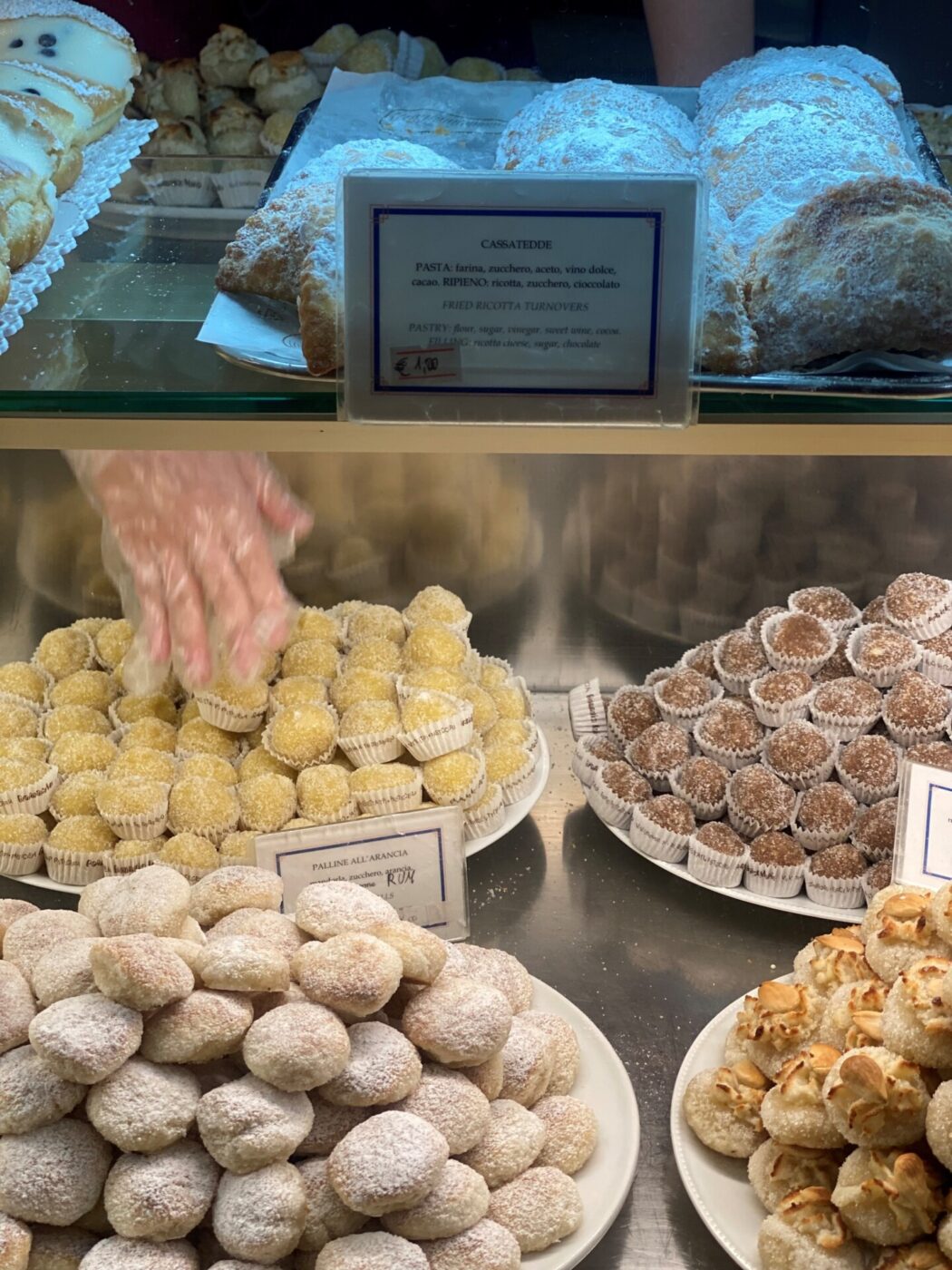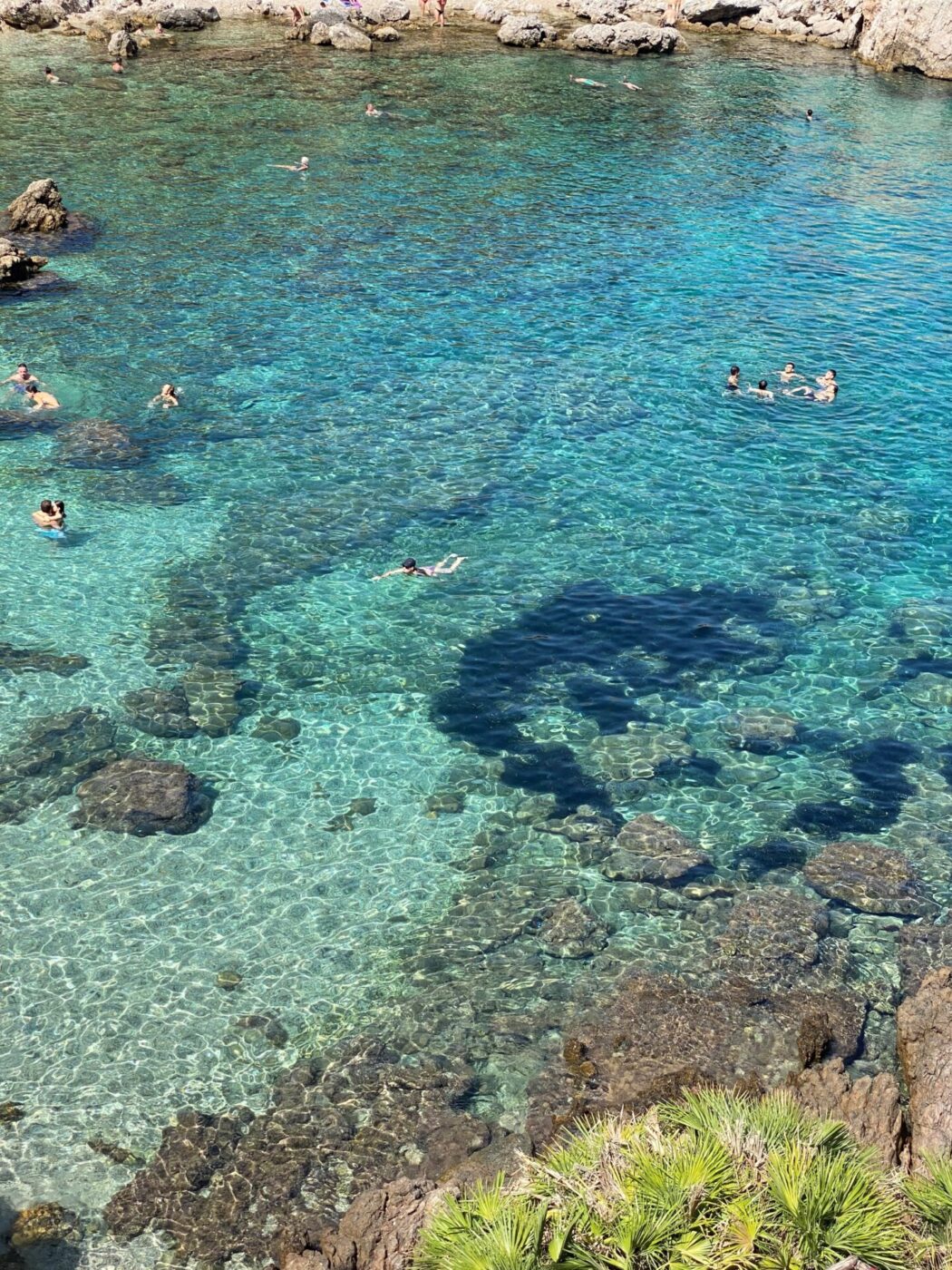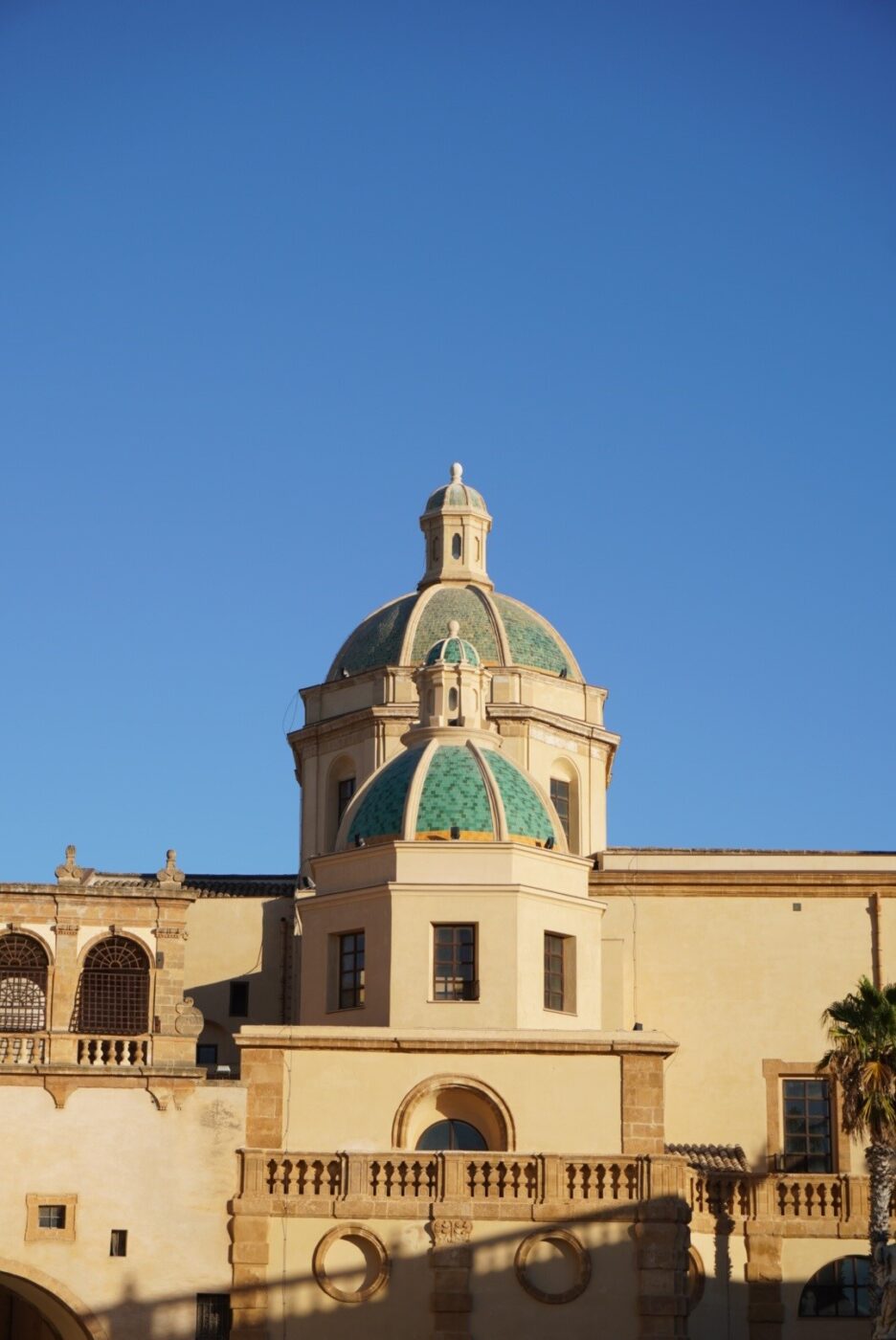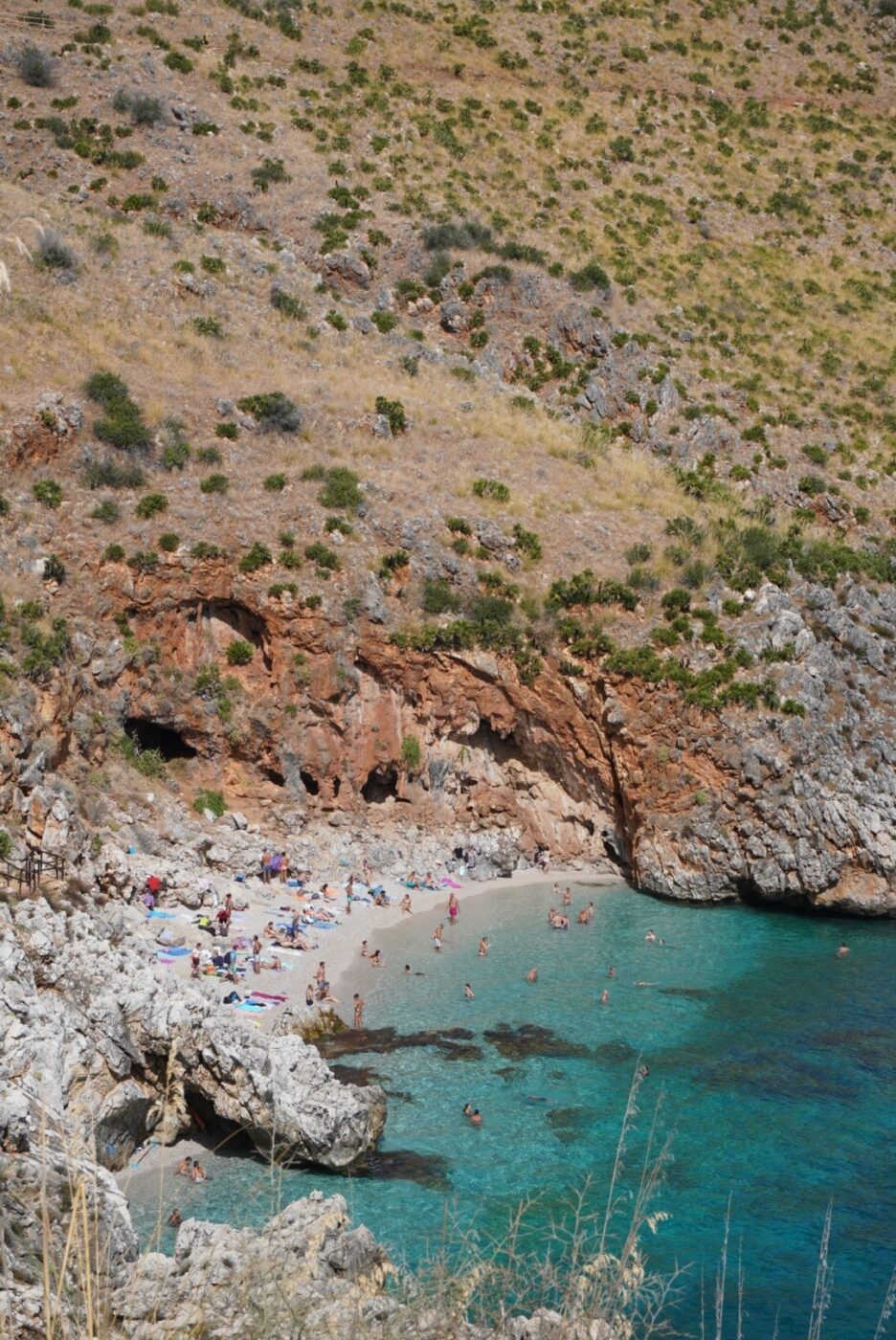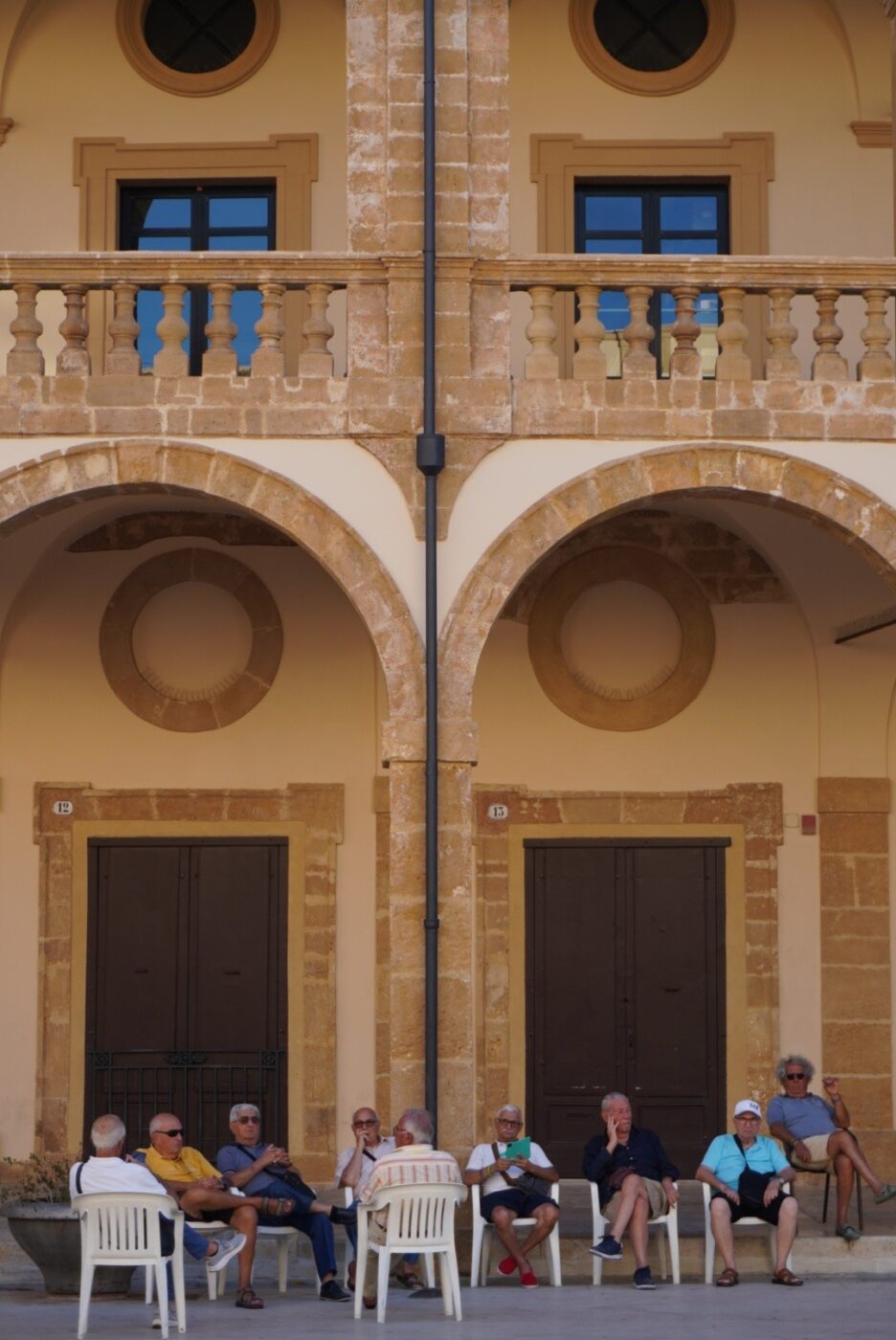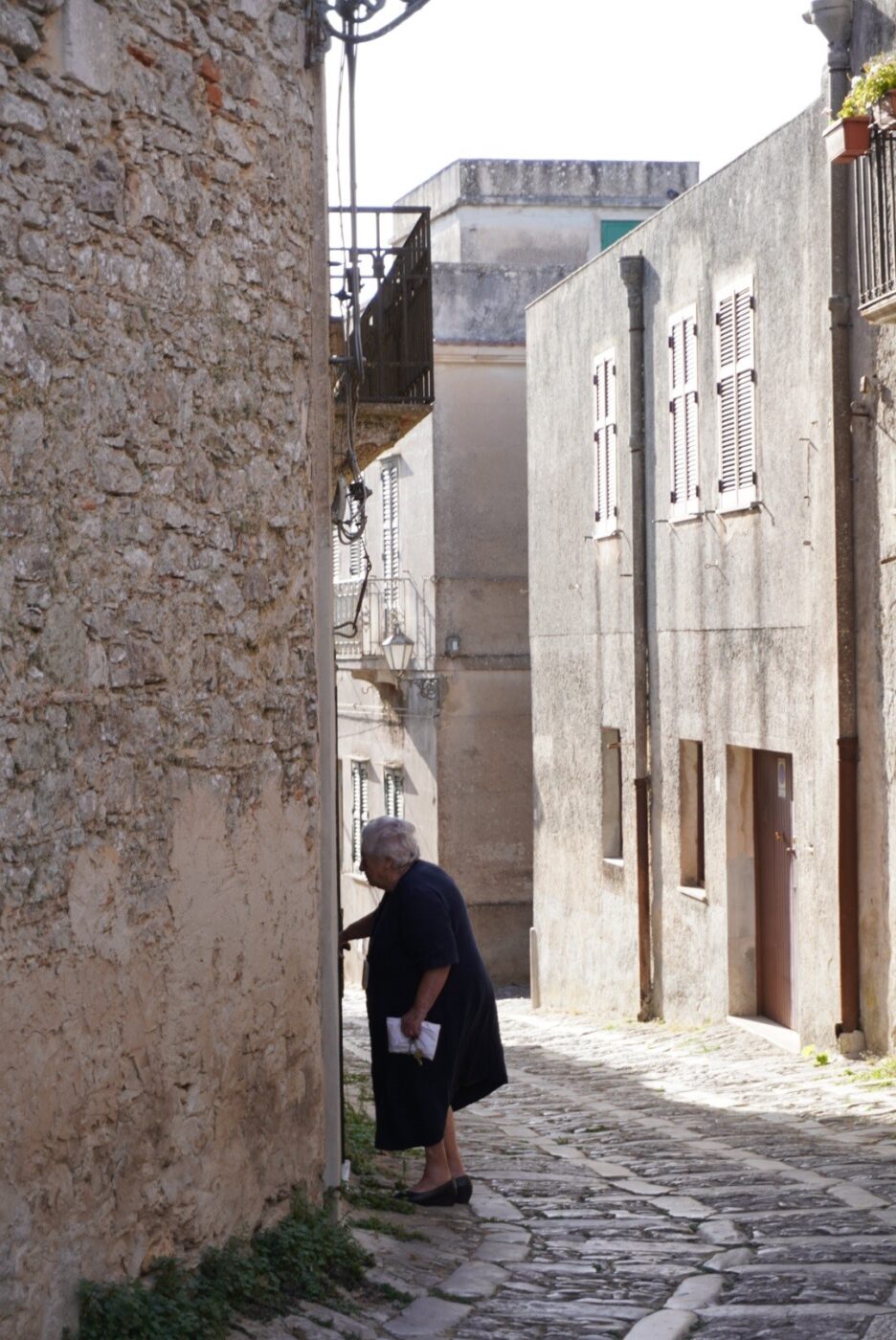In September, when the summer crowds were dying down but the warm weather was still blissfully in swing, we hopped on our motorbike and whizzed from Noto in the southeast of Sicily all the way over to the other side of the island. Our road trip saw us stopping off and immersing ourselves in the towns, cities, landscapes, and beaches of Sicily’s western coast.
Here you can pass from ancient Greek temples which overlook the sea to endless rolling hills covered in fertile vineyards. On the same day, you can swim in the bluest waters, wander the highest hilltop towns, explore the wildest landscape, and taste the sweetest pastries. The list of places to visit in the wild Sicilian west is endless, but here are some of the best spots to explore shimmering salt pans, hidden grottos, and bustling city centers:
SCOPELLO
You may have seen a million images of this iconic spot in Sicily, but nothing will prepare you for the real-life experience. An entire day can be whiled away at Tonnara di Scopello’s stone-slabbed beach, dotted with rows of deckchairs. They all face toward the rock formations which loom out of the teal-toned waves and away from the crumbling crimson edifice which was once a historic tuna-fishing house. This is simple Sicilian charm at its finest. After a day of reading, swimming, and snacking, we headed into the town of Scopello just a 10-minute drive from the coast. The hub of this tiny village is in a little square which was once the courtyard of a working baglio (farmhouse). Now, it is lined with bars and restaurants welcoming you in for well-deserved aperol spritzes at the end of a busy day of doing nothing.
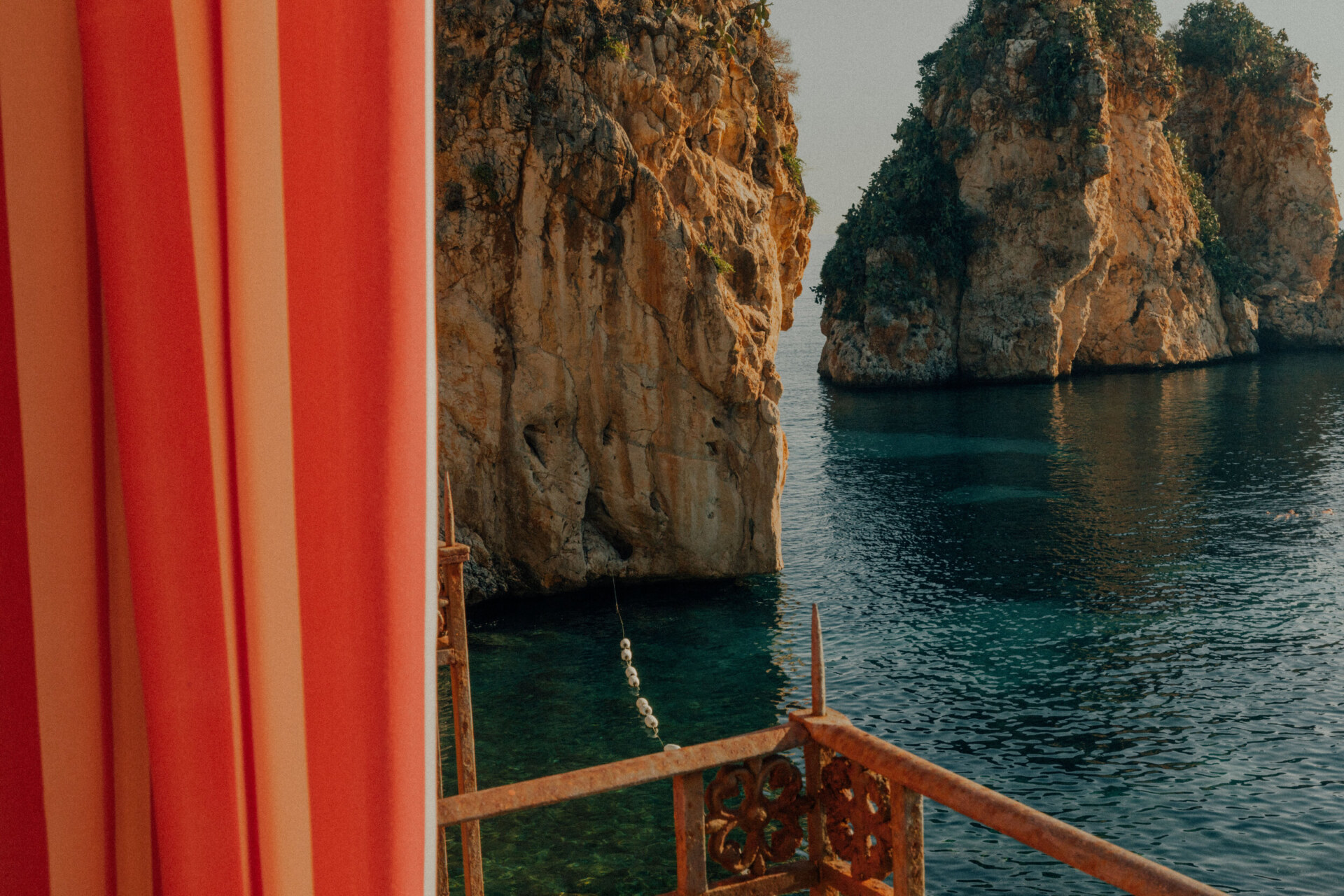
Scopello; Photography by Stephanie & Eduardo Cerruti
ZINGARO NATURE RESERVE
As Sicily’s first established Nature Reserve, Zingaro’s long standing protection has certainly made it one of the island’s most beautiful natural landscapes. The reserve borders the north-western coast and is made up of rocky crags, verdant hills, enormous grottos, and idyllic beaches with turquoise waters. You will find pebbled coves where locals work on their year-long tans, moon-shaped bays are lapped by twinkling waves, layers of rocky slabs where towels can comfortably bedeck the flat grey stones, and hidden grottos which lie in wait and beg to be explored. As we hopped from shore to shore, we kept an eye out for a shady spot to scoff down our prosciutto-stuffed panini and juicy figs, the last of the season. We spent the entire day exploring and hiking around the reserve, and could have stayed longer. Zingaro is not to be missed.
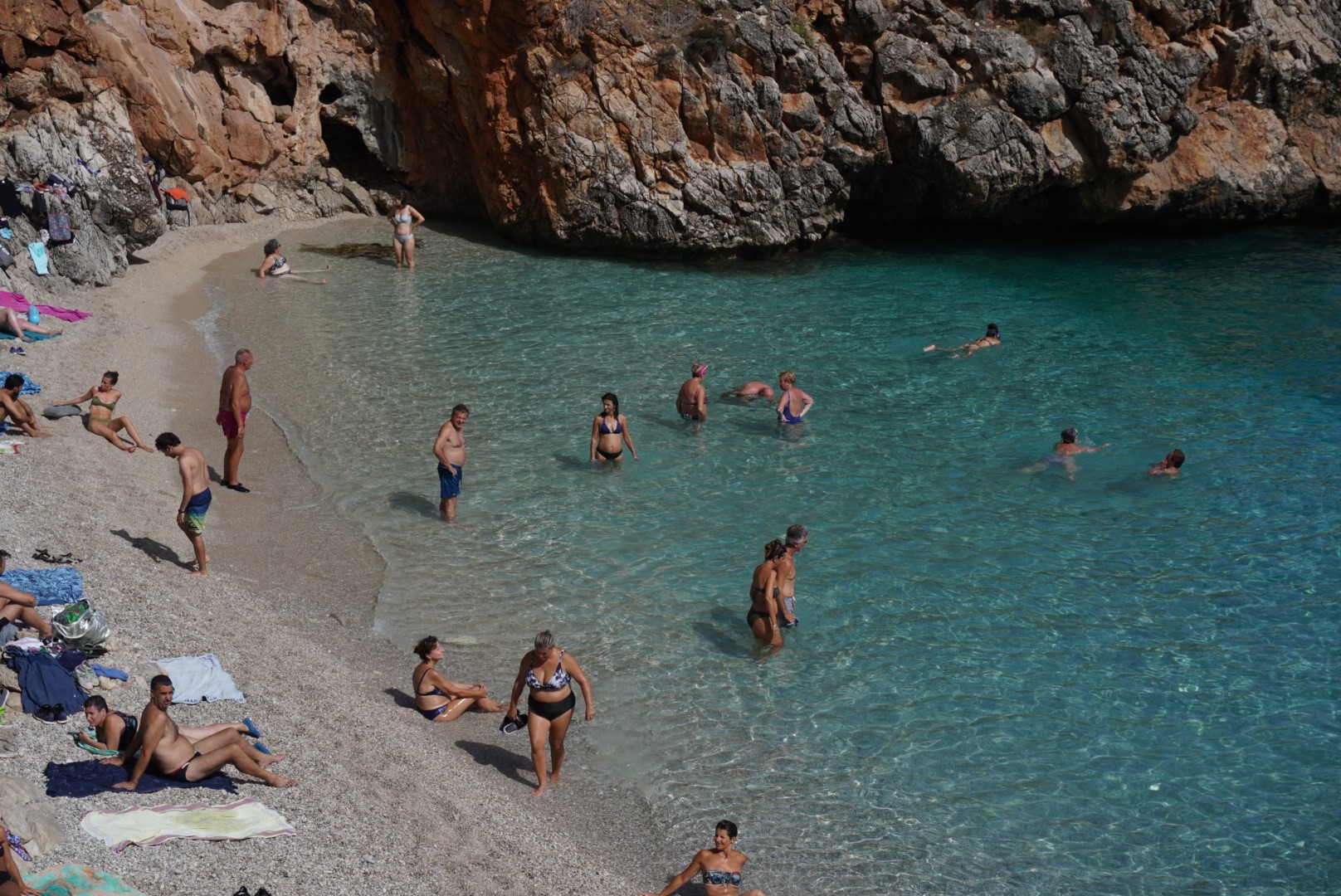
Zingaro Nature Reserve
MARSALA
Marsala is a small but ornate town with an exquisite centre of Baroque churches and creamy stones. During the day, they sparkle in the sunshine, and at night, they glow in the hazy yellow streetlight. After wandering these shining streets, dine at Ciacco Putia Gourmet, a hole-in-the-wall eatery with tables spilling into a little piazzetta overlooked by a 17th-century church and an elaborate fountain. The food is exciting and creative but with strong ties to west Sicilian ingredients. At the end of our meal, the owner insisted we taste some sweet Marsala wine which, naturally, originates from the grapes of this region. The area surrounding Marsala is also worth discovering. Miles of extensive landscape is covered in rows upon rows of vineyards which produce some of Sicily’s most important wines. The coast of Marsala is also home to the famous salt pans where you will see salt farmers harvesting mountains of gleaming crystals at dusk. Grab a drink at Mamma Caura, an atmospheric bar which sits right on the edge of the salt pans. The view at sunset is unlike any other. If you head there a few hours earlier, you can also grab a little boat over to the island of Mozia, which is home to an impressive archaeological museum displaying the ancient treasures that have been found in the surrounding waters.
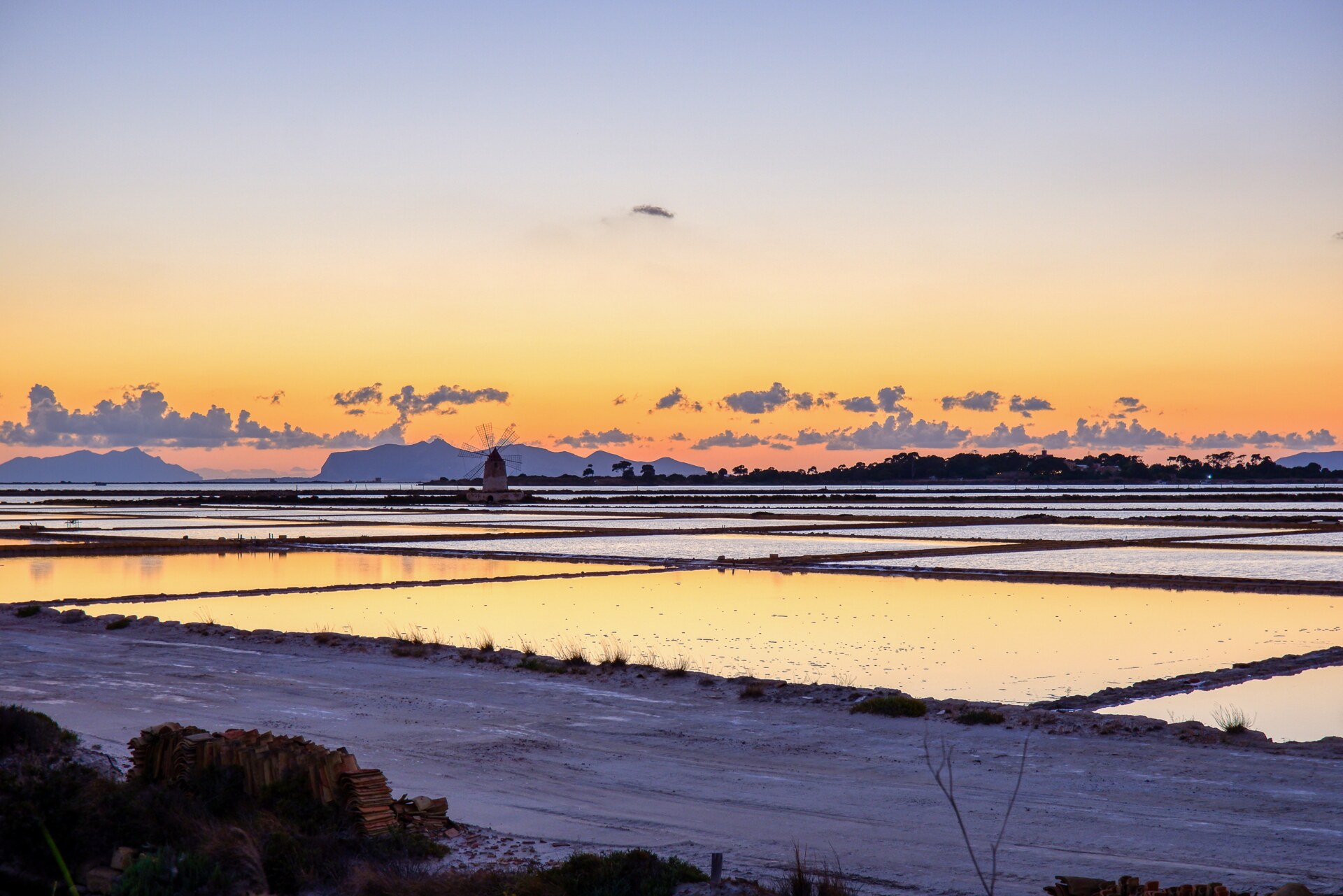
Salt Pans, Marsala
MAZARA DEL VALLO
This is a bustling little town. As you roam through its snaking alleys, you will get glimpses of Sicilian life: say, young children kicking a football outside centuries-old buildings, or fruit vendors driving around town in their open trucks crammed with watermelons, peaches, oranges, and lemons, a multicoloured cornucopia zipping through the streets. In the vast honeystone piazza, you will see locals sitting on plastic chairs and sweltering in the afternoon heat, and you will see swarms of Vespas buzzing through town transporting their passengers from one errand to another. While Mazara del Vallo offers this view into the charm of daily Sicilian existence, it is also a place steeped in impressive history. This can be seen in the array of architectural marvels which speckle the small city, constructed by the various powers which ruled over the coastal town (and its strategic trading port); buildings of Roman, Arab, and Norman influences can all be found. Yet the town’s waters are as beguiling as its land. Famous for its bustling fishing harbour and a fish trade that dates back over 1,000 years, Mazara del Vallo’s coastline swims with red prawns–local delicacies. The prawns are usually served raw in pastas, couscous, or just with a drizzle of olive oil and lemon to enhance the soft, delicate flavours.

Mazara del Vallo
ERICE
Our last stop, settled staggeringly high in the hills above Trapani, was the sleepy town of Erice, an old mediaeval settlement with cobbled alleys flanked by cobbled houses and dotted with cobbled piazzas. We visited in the mid-afternoon, just after the aggressive heat had subsided and it seemed we had the place entirely to ourselves. We wandered down the winding streets, nipping into churches and artisanal shops along the way. After a while, we heard lively noises in the distance and we followed the sounds until we reached a crowd standing outside a little bakery. It was the iconic Pasticceria di Maria Grammatico, one of Erice’s most sought-after attractions.
Maria Grammatico was an Erice local who was sent to live in a convent as a young girl. There, the nuns taught her their traditional pastry recipes, in gruelling conditions. Maria spent her youth toiling away from dawn till dusk in the kitchens. She would shell almonds, sift flour, beat eggs, mould biscuits, bake tarts and ice cakes. In her early twenties, she finally fled the convent. To make ends meet, she would bake and sell the sweet treats which she had spent the last 15 years of her life perfecting, until she finally saved enough money to open a little shop in her hometown. Her pastry shop has been going strong for 50 years now and attracts travelers from far and wide, all craving a taste of her Sicilian specialities. After an indulgent snack of chocolate ricotta cake, genovesi, and cannoli (which we enjoyed on the little terrace at the back of the shop), we headed to the edge of Erice to take in the spectacular views over the vast terrain of western Sicily.
As you eat, drink, swim, and wander your way through western Sicily, you will notice how every area has its own distinct character, customs, delicacies, and even dialect. Just ask, and the locals will happily enlighten you with their stories, their traditions, and their local specialties. But even after they indulge you, you’ll still be left wanting more. Trust me, your first trip to western Sicily will most likely not be your last.
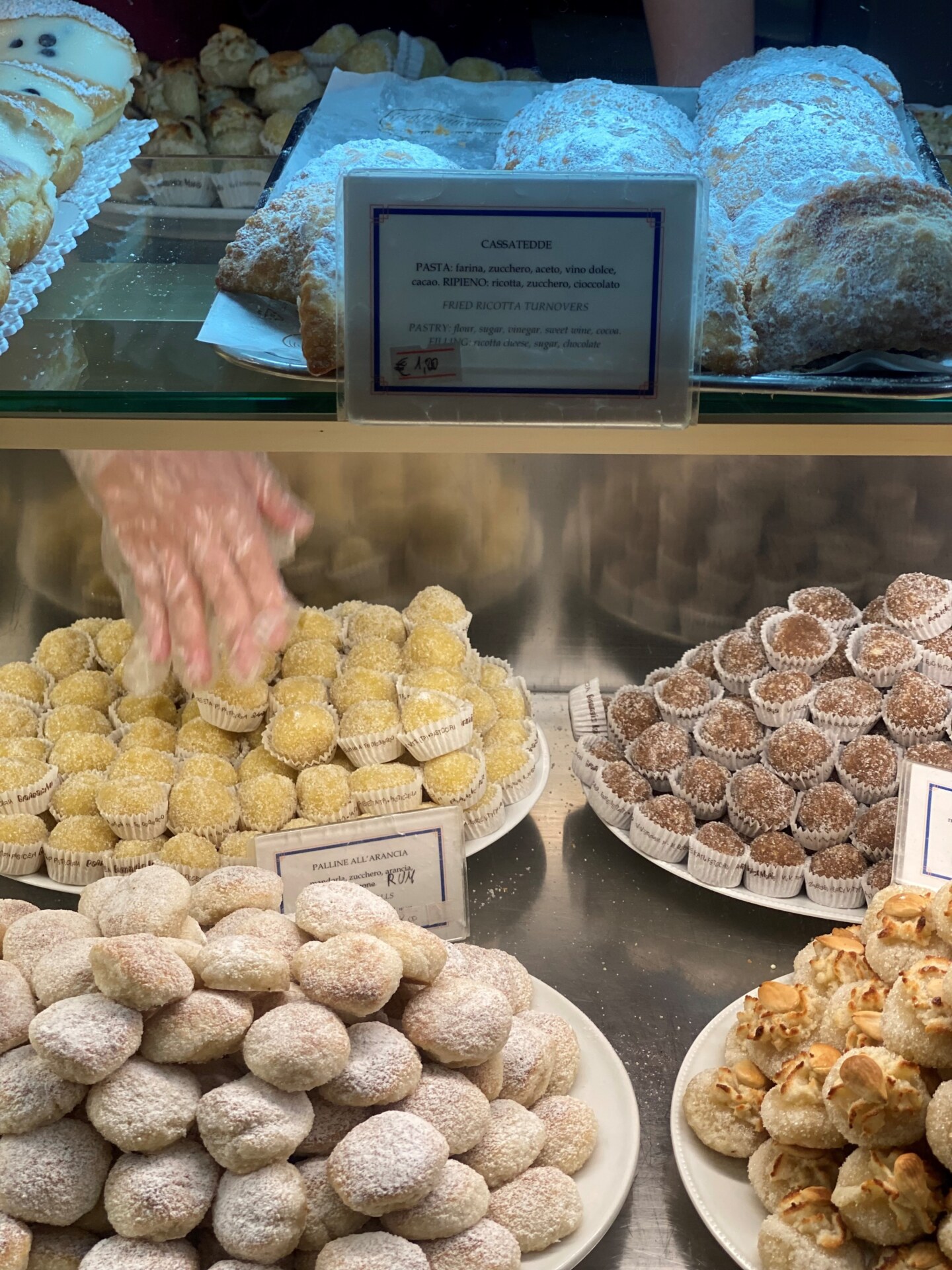
Pasticceria di Maria Grammatico, Erice


